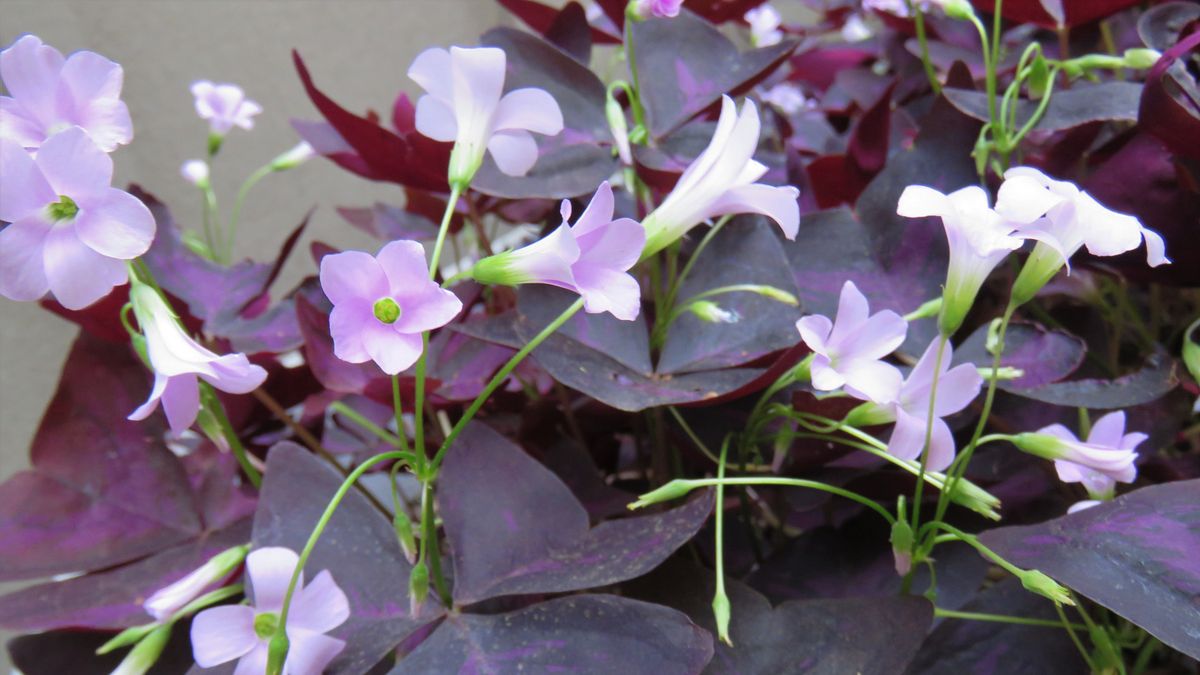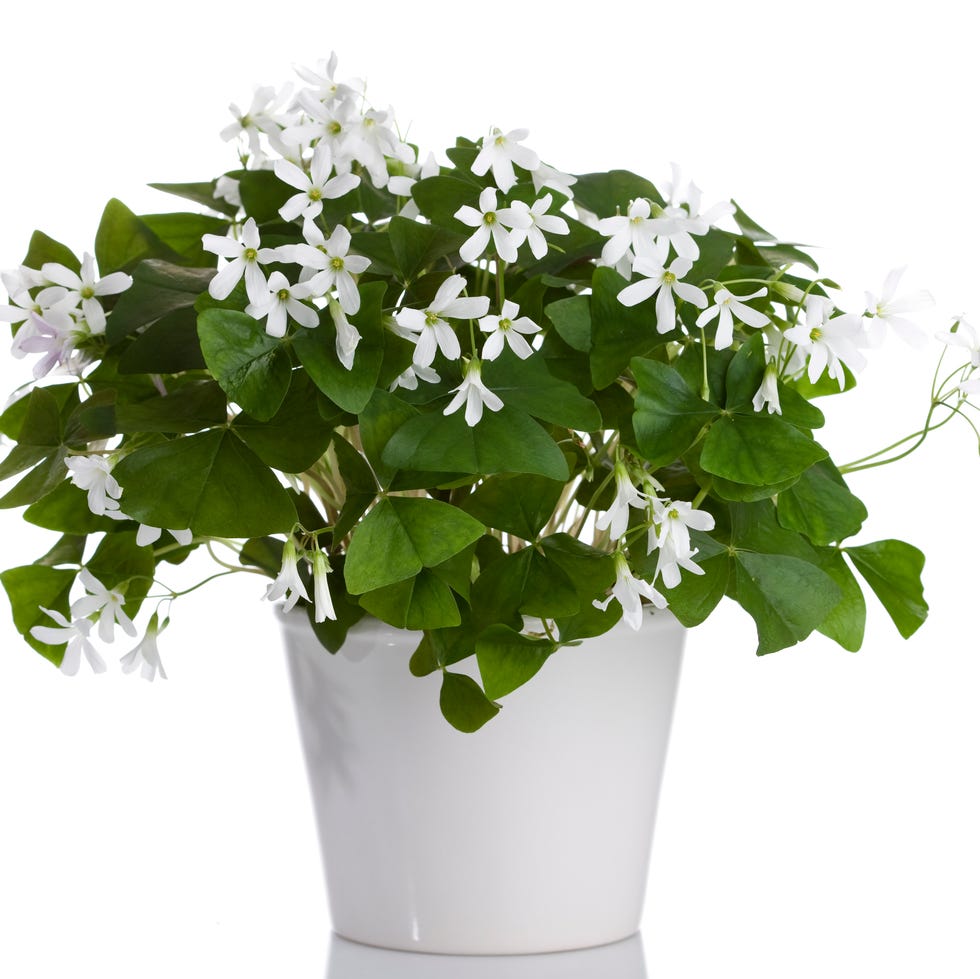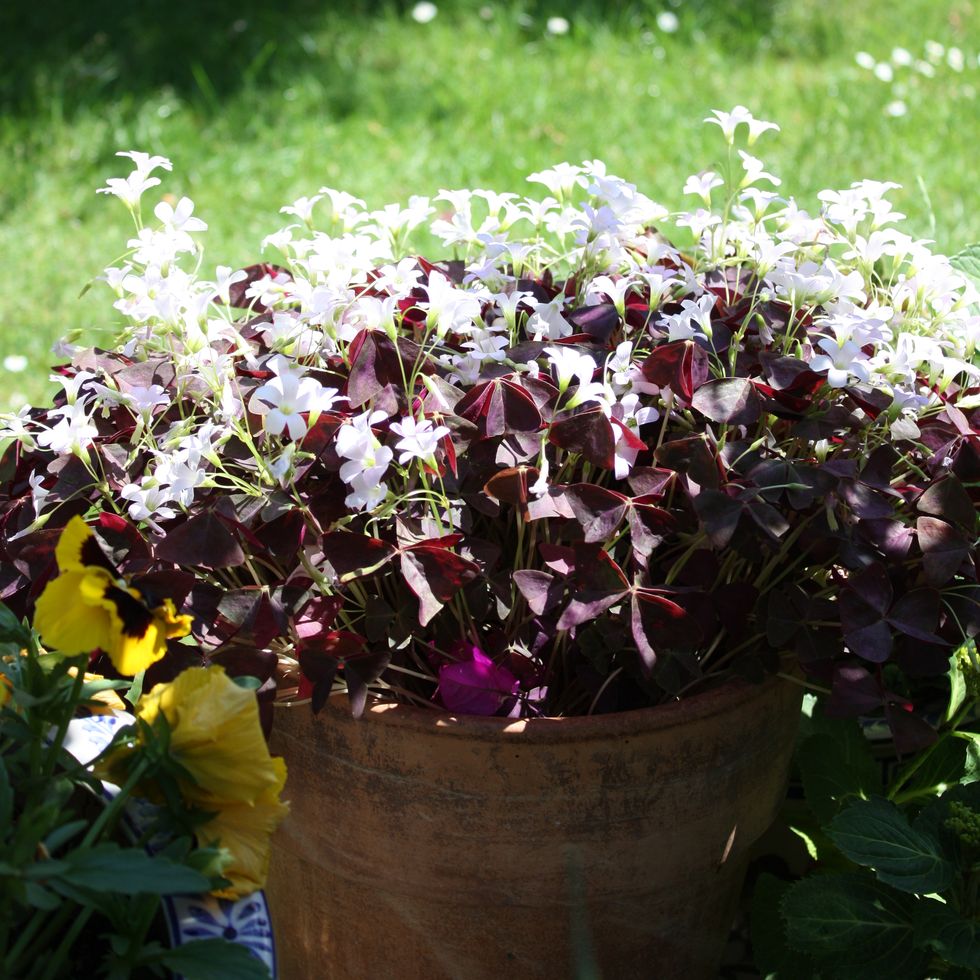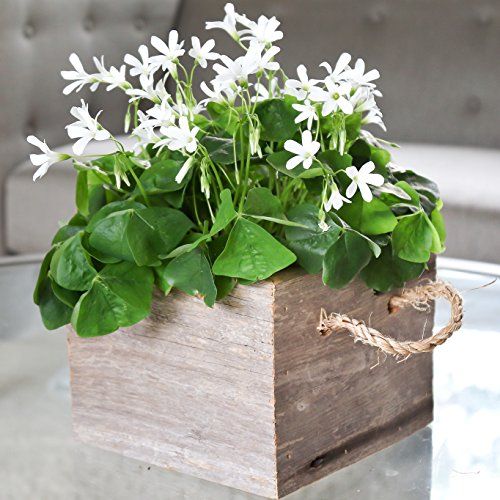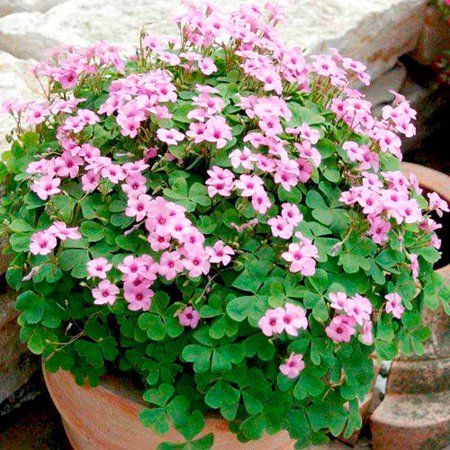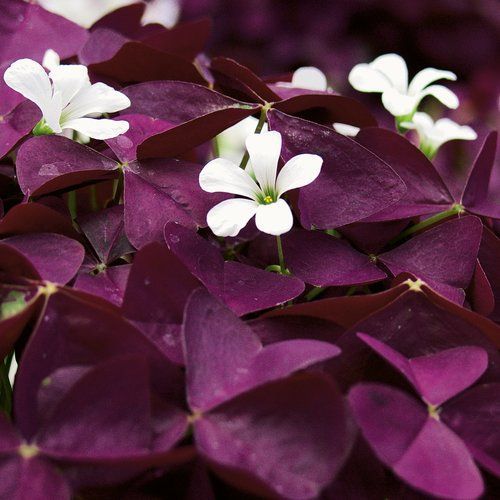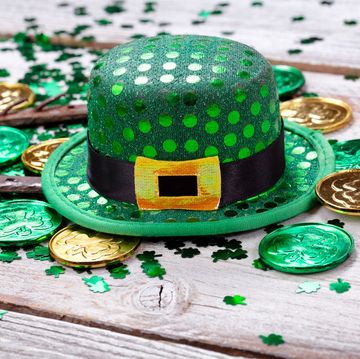If you’re looking for a charming indoor plant to celebrate the arrival of spring, how about a shamrock? This petite plant, which is said to bring good luck, is associated with St. Patrick’s Day history. Legend says that St. Patrick used a three-leafed plant, probably a shamrock, to illustrate the Holy Trinity to converts to Christianity in Ireland. But because true shamrock plants don’t survive well indoors, the houseplants you see at stores this time of year are a hardy species called Oxalis regnellii, or shamrock plant. Shamrocks have three-lobed green or burgundy foliage and delicate white or pink flowers. They’ve become a seasonal favorite because they’re showy, long-lived, and unfussy.
Here’s how to grow a shamrock plant, how to grow for a shamrock plant, and what else you need to know about this elegant little perennial plant.
How much light does my shamrock plant need?
Shamrock plants like bright, indirect light, so place it near a south or west-facing window. And here's an interesting fact: Some species close their leaves and flowers in response to light levels, says Penn State Extension. Each night (or on overcast days!) the plant folds up, then reopens in the morning. The movement is due to pressure in the plant’s cells tied in to its circadian clock, though the purpose isn’t exactly known.
How do I care for my shamrock plant?
Let the soil dry out slightly between waterings, and dump out any water that remains in the tray beneath the pot, because no plant likes wet feet. Feed it every two to three weeks while it’s flowering with a liquid fertilizer according to package directions, says Iowa State University Extension. Shamrock plants prefer to be crowded, so repot only if your plant is drying out within a day of watering.
Why does it look like my shamrock plant is dying?
Don’t panic! Most species of shamrock, which grow from tiny bulbs, lose their leaves and go dormant a few times a year. The dormancy period, which may range from a few weeks to a few months, is part of the normal growing cycle. During dormancy, stop watering, and place the plant in a cool, dark place. When you see new growth, move your shamrock back into bright light and resume watering, says the University of Vermont Extension.
Is the shamrock plant safe around pets?
Not exactly. Keep this plant away from curious pets, because it contains oxalic acid, which can cause kidney damage if large quantities are ingested.
Should I take my shamrock outdoors in summer?
It’s fine to take your shamrock outdoors for summer vacation in a shady location. Leave it in its pot, or plant in front of a shady border, says Michigan State University Extension. Before a freeze, dig up the plant and repot to enjoy as a houseplant all winter long. In warm climates (USDA Hardiness Zone 8 and warmer), shamrock plants can stay outdoors all year long.
Arricca Elin SanSone has written about health and lifestyle topics for Prevention, Country Living, Woman's Day, and more. She’s passionate about gardening, baking, reading, and spending time with the people and dogs she loves.
